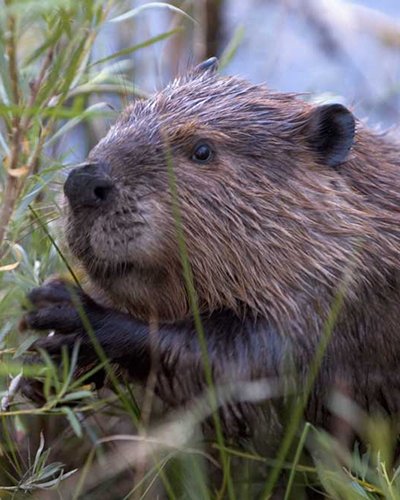Breaking Down Barriers: How the Santa Margarita River Trail Preserve Protects Wildlife
As Southern California’s urban sprawl continues, wildlife corridors and landscapes become increasingly fragmented, isolating animal populations and threatening biodiversity. Roads, highways, and development disrupt migration routes, making it harder for animals to access food, mates, and safe habitats. In response, The Wildlands Conservancy has focused on preserving and enhancing key wildlife corridors like the Santa Margarita River Trail Preserve, a vital link in the region’s ecosystem.
Santa Margarita River Trail Preserve: A Critical Wildlife Corridor
Santa Margarita River Trail Preserve (SMRTP), located in Fallbrook, is one of the last intact habitats in the region, offering critical resources such as riparian areas, oak woodlands, and chaparral. These diverse habitats support a range of species, from large mammals like mountain lions to smaller creatures like beavers, coyotes, and reptiles. The Preserve serves as a natural corridor, connecting larger conservation areas like the Santa Ana Mountains and Camp Pendleton, ensuring that wildlife can move freely between these vital habitats.
As Zach Kantor-Anaya, Wildlands' South Coast Regional Manager, explains:
"The Santa Margarita River corridor is the last fully intact strip of habitat that includes aquatic resources, riparian habitats, grasslands, oak woodlands, and chaparral. This mosaic of habitats is crucial for wildlife moving between territories."
Wildlife Underpasses: Mitigating Urban Barriers
In urbanized landscapes, roads and highways pose a significant threat to wildlife. At SMRTP, underpasses allow animals to safely cross beneath roads, avoiding dangerous collisions and ensuring access to essential habitats. These underpasses are vital for both large species like mountain lions and smaller ones, such as reptiles and amphibians, allowing them to move freely between riparian and chaparral areas.
Biodiversity on the Move
SMRTP’s corridors and underpasses are vital for preserving biodiversity. Camera traps show a variety of species using these pathways, including western fence lizards, bobcats, and even nocturnal beavers. For larger mammals like mountain lions, the Preserve provides an essential route for dispersing young males, which helps maintain genetic diversity and reduce inbreeding risks.
"A key component of sustaining the mountain lion population in the Santa Ana Mountains is ensuring adolescent males can disperse out of established territories. The Santa Margarita River Trail Preserve provides that connection to unoccupied habitats," says Zach.
Conservation in Action: Protecting Ecosystems for the Future
The efforts at SMRTP are part of a broader strategy to mitigate the impacts of urbanization and preserve Southern California’s wildlife. By creating and maintaining these wildlife corridors, Wildlands ensures that animals have safe passageways to thrive, even amidst development. Visitors can support these efforts by respecting the Preserve’s rules, staying on designated trails, and supporting the larger conservation mission.
With increasing development and habitat loss, the Santa Margarita River Trail Preserve offers a critical lifeline for wildlife in the region. Through continued conservation, education, and public support, Wildlands is building a safer, more connected landscape where ecosystems can remain resilient for generations to come.
Through the Lens: Small Creatures on the Move
Captured from a wildlife camera along the roadway in the Santa Margarita River Trail Preserve, these images offer a rare glimpse into the lives of the smaller animals that use the underpasses to safely travel between the riparian areas and chaparral hills.





